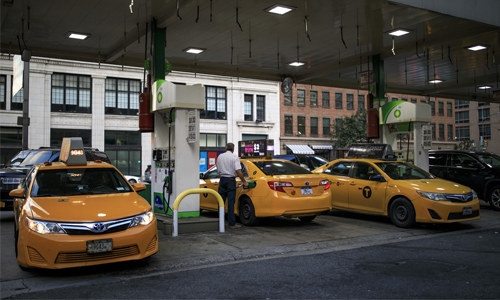Even as self-driving cars take to the road, drivers will still be in high demand
Tesla’s Elon Musk recently announced plans to start deploying driverless taxis across the United States next year. It was the latest reminder of how a driverless-car future captures the imaginations of visionaries but terrifies those who drive for a living. For the short term, however, those fears are overblown. Through at least the next decade, human truck drivers, bus drivers and taxi drivers will remain in strong demand.
And during that time, self-driving technology will put little, if any, dent in that demand. What accounts for drivers being such a hot commodity? Labour shortages have afflicted a broad swath of blue-collar industries, including the transportation sector. Simple economics explains the gap: Demand exceeds supply. And in this case, by huge margins. Several factors have diminished the supply of available workers.
According to our own calculations based on microdata from the US Census Bureau’s Current Population Survey, the transportation industry employs a relatively large share of older workers, who are steadily leaving the workforce. Meanwhile, as these Baby Boomers retire in droves, the industry struggles to recruit enough workers to replace them. As an increasing number of young people pursue college degrees, they’re shying away from such blue-collar work and flocking to white-collar jobs. The prospect of a future economy saturated with driverless cars and trucks probably isn’t helping either. After all, why start a career in a job that AI may someday obviate? And then there are drug-testing requirements.
Such rules reduce the number of prospects who can pass the needed test for working in some transportation jobs. It’s not that the tests have become more stringent. Finding workers who can pass them has become more of a hurdle simply due to the number of states that have decriminalized or legalized marijuana. At the same time the supply of drivers has decreased, the demand for them has substantially increased. The swell of e-commerce accounts for much of the growing demand. For example, the ever-growing Amazon needs thousands of warehouse workers to store and package its products, and thousands of drivers to transport its products.
Case in point: Our own analysis of Bureau of Labour Statistics data found that from 2013 to 2018, employment in the transportation and warehousing industries increased by over 20%, vs. 9% across the total economy. This combination — strong demand and weak supply — has spelled good news for drivers: The Bureau of Labour Statistics’ employment data shows that transportation and material-moving occupations — crane operators, tractor operators, gas station operators and hand packagers — boast an unemployment rate of 4.7% in the past year, the lowest since 2000 when the BLS started tracking consistent and comparable data for these occupations.
And these days, not only are more of these workers employed; their wallets are bigger, too: Through the first quarter of 2019, wages for transportation and material-moving workers in the private sector grew by 4.2%. Shortages in transportation — which we expect to persist for at least the next decade — are forcing companies to rethink their recruiting strategies. Among other steps, that means hiring beyond their typical pools of candidates. Businesses are now hiring more women in traditionally male-dominated sectors such as transportation and material-moving.
Based on microdata from the US Census Bureau’s Current Population Survey, our own calculations find that since 2016, women have accounted for about 50% of the employment growth in these occupations. As a result, they now make up nearly one in five workers in these jobs. But what is good for drivers is less so for the sectors that rely on them. Rising labour costs are prompting price increases in transportation and warehousing goods and are expected to chip away at corporate profits. To some degree, these higher costs will be passed to consumers.
Moreover, these ripples are impacting a wide swath of industries beyond just transportation and warehousing companies. In waste collection, for example, transportation and material-moving workers make up 70% of workers. Wholesalers — especially those specializing in food and beverages — also employ many drivers. And so do retailers that haul furniture, along with mining and manufacturing companies. In the past three years, the number of workers added to transportation and material-moving occupations was roughly equal to the number of workers added to all other blue-collar occupations combined.
The growing need for transportation workers will also create pressure in industries with high demand for workers without a college degree that are capable of performing physically demanding labour, including manufacturing, agriculture and construction. Down the line, employers will be eager to take advantage of cheap, automated labour. But until that day comes — and it is probably still far away — human workers literally and figuratively will remain in the driver’s seat.
Related Posts

